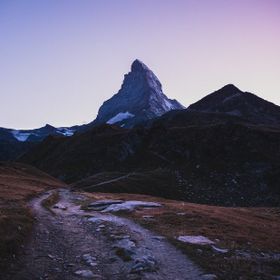I did the Franz Josef glacier track twice, once during the day and at night, alone ans very different. As you can see.
I did the Franz Josef glacier track twice, once during the day and at night, alone ans very different. As you can see.
Read less
Read less
Views
451
Likes
Awards
Contest Finalist in Capture The Milky Way Photo Contest
Peer Award
Superior Skill
Magnificent Capture
Absolute Masterpiece
Superb Composition
Top Ranks
Categories
Same photographer See allBehind The Lens
Discover more photos See all
Behind The Lens
Location
"Galaxy glacier" is one of few photographs I did at Franz Josef glacier in New Zealand. The tarn you can see here is Peter's pool on one of the may tracks in the surroundings of the glacier.Time
First I went to the glacier's base during the day. But when I was there I figured out that the milky way would rise from the glacier. So I decided to hit the track again at night. I didn't explore Peter's pool during the day so I discovered the tarn and the milky way at the same time after 10 pm.Lighting
The spot was in total darkness with no artificial light anywhere. I just had a headlamp I used to "paint" the grass and the trees behind the tarn to actually see them during my 30 seconds exposure time. My Sony a7S II camera is very good in low light conditions and even stars are a great source of light. The red color you can see on the trees and grass is actually the red light mode of my headlamp. I used the lamp to lighten things so I could bring down my ISO and aperture for better details in the sky.Equipment
I used my Sony a7S II with the Samyang 14mm f/2.8 on a tripod.Inspiration
I never did astrophotography before my trip to New Zealand but I knew that Middle Earth was the perfect country for night photography. There are so many clear spots, especially in Aoraki/Mount Cook national park where the sky can be very deep dark without any light pollution. They call these places "dark sky reserves" I was lucky to observe the Milky way many times in New Zealand, but for photography I needed a foreground subject that would be intersting enough. Franz Josef glacier was a perfect place because of the beautiful scenery and the glacier that I could approach really close. What inspired me in Peter's pool was the reflection in the water. I like the shape of the double mountain range. I like to think that everything on Earth can be put in the foreground of the Milky way beacause all these wonders are here on this tiny rock.Editing
The post-processing here mostly consisted in revealing the milky way. I had to bring up the clarity and highlights to see it better. I slightly brought up the shadows too.In my camera bag
I have a Sony a7S II camera with a CANON 24-70mm f4, a SAMYANG 14mm f2.8, a CANON 75-300mm f4-5.6 and a CANON 50mm f1.8. I also have a M42 adapter and an Helios 44-2 58mm f2.8 lens made in USSR. And a Pola filter.Feedback
To me the most exciting thing in astrophotography is the subject you put in the foreground. There are so many stories and compositions to find when night fall. You can know via different apps how the Mily way would appear at night so you can look for your subject during the day. Once you have the subject and the clear sky (which is already the most of the work) you need a tripod and and wide aperture lens. Several lenses are really great for astrophotography like the Samyang 14mm f/2.8 which is really cheap and covers a big field of view, or the Canon 35mm f/1.4 which is a great lens. You will need to do long exposures so be careful about Earth rotation. Use the 500 rule to avoid star trails. Divide 500 by your focale length and you will find your maximum time of exposure.
















































